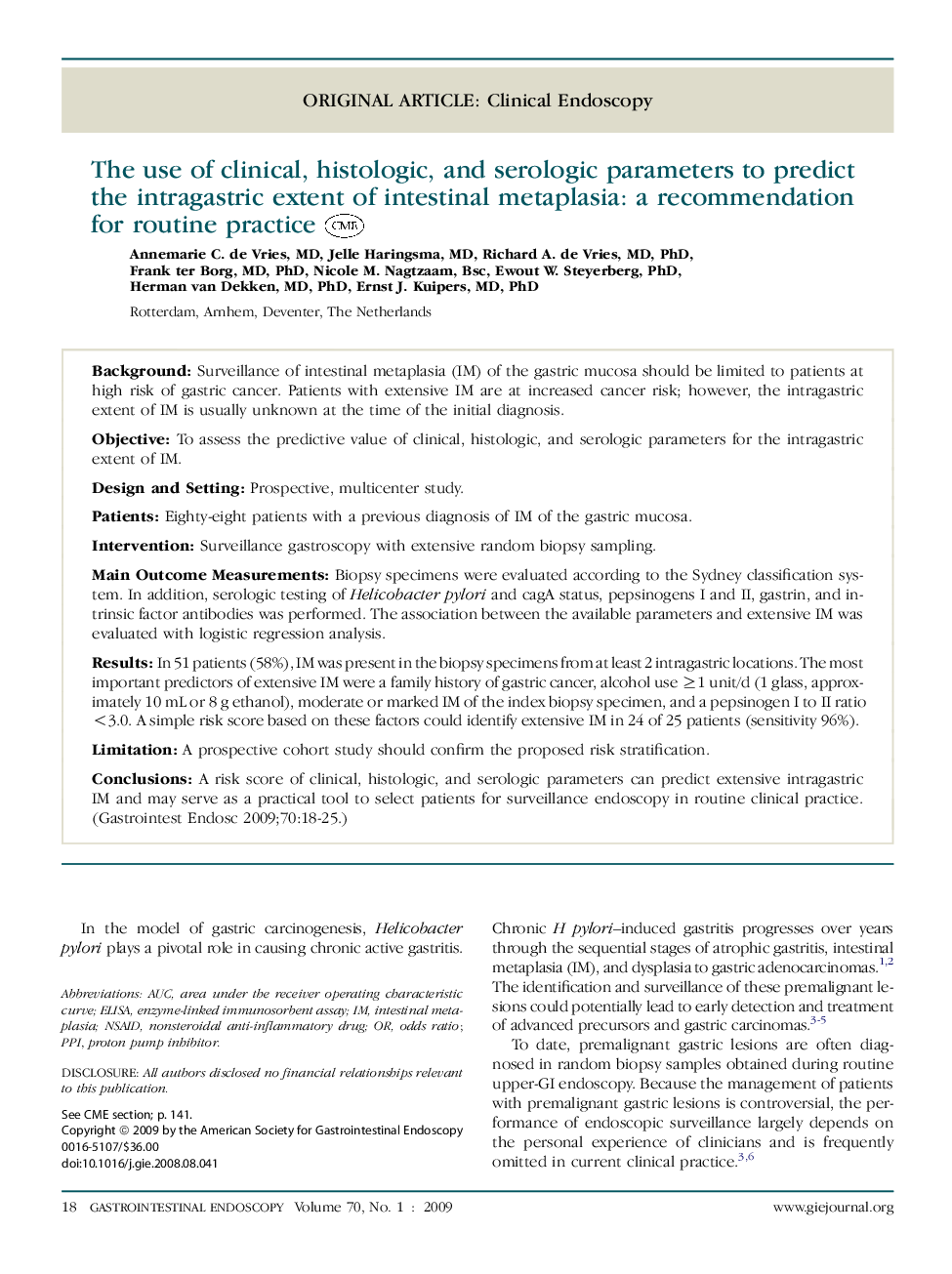| Article ID | Journal | Published Year | Pages | File Type |
|---|---|---|---|---|
| 3305409 | Gastrointestinal Endoscopy | 2009 | 8 Pages |
BackgroundSurveillance of intestinal metaplasia (IM) of the gastric mucosa should be limited to patients at high risk of gastric cancer. Patients with extensive IM are at increased cancer risk; however, the intragastric extent of IM is usually unknown at the time of the initial diagnosis.ObjectiveTo assess the predictive value of clinical, histologic, and serologic parameters for the intragastric extent of IM.Design and SettingProspective, multicenter study.PatientsEighty-eight patients with a previous diagnosis of IM of the gastric mucosa.InterventionSurveillance gastroscopy with extensive random biopsy sampling.Main Outcome MeasurementsBiopsy specimens were evaluated according to the Sydney classification system. In addition, serologic testing of Helicobacter pylori and cagA status, pepsinogens I and II, gastrin, and intrinsic factor antibodies was performed. The association between the available parameters and extensive IM was evaluated with logistic regression analysis.ResultsIn 51 patients (58%), IM was present in the biopsy specimens from at least 2 intragastric locations. The most important predictors of extensive IM were a family history of gastric cancer, alcohol use ≥1 unit/d (1 glass, approximately 10 mL or 8 g ethanol), moderate or marked IM of the index biopsy specimen, and a pepsinogen I to II ratio <3.0. A simple risk score based on these factors could identify extensive IM in 24 of 25 patients (sensitivity 96%).LimitationA prospective cohort study should confirm the proposed risk stratification.ConclusionsA risk score of clinical, histologic, and serologic parameters can predict extensive intragastric IM and may serve as a practical tool to select patients for surveillance endoscopy in routine clinical practice.
